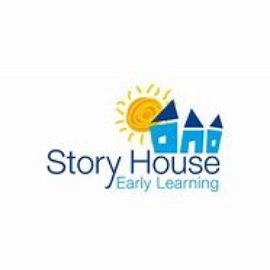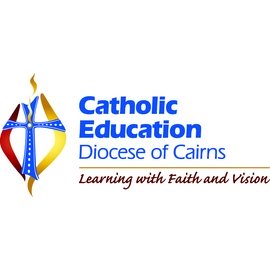Part of the new mandates include a stronger focus on Aboriginal and Torres Strait Islander histories and cultures, with the new sub-strands and key concepts focussing on the experience of our Indigenous people.
“So whereas Aboriginal and Torres Strait Islander histories and cultures was previously located in the cross curriculum priority, as it should be, it’s now situated in the history curriculum itself,” Education & Public Programs Manager at The National Trust of Australia (Victoria), Nicola Dziadkiewicz, tells EducationHQ.
“What that means for teachers is that it’s mandated, it’s prioritised, and it’s front and centre for this current generation of students, which is so exciting because previous generations haven’t had the same focus on the Aboriginal and Torres Strait Islander histories.
“So in a few years time, we’ll see students talking and thinking and considering those histories and stories in a way that generations before have not yet been encouraged to do so.”
The new sub-strands and key concepts focus on the experience of Indigenous people, with teachers required and encouraged to find elders to speak to kids and students of all ages, Dziadkiewicz says.
At the same time, students in Years 7-10 are also required to focus on topics from Western and Asian societies.
The revision of the history curriculum is not only ensuring a world history approach, but also better connecting with cross-curriculum priorities for better student learning.
“That’s our understanding, and that’s the messaging from the Victorian Curriculum and Assessment Authority,” Dziadkiewicz says.
“What we love about that, is that students take this perspective of where their local history fits in at certain periods of time, so they look all around them and think about their local history at different periods of time and what was going on in the world.
“That will help them interpret different perspectives on history at certain times, which really supports them to develop critical thinking skills and just being an informed citizen in general.”
Dziadkiewicz’s role involves overseeing all of the National Trust’s education programs, including excursions and Incursions, and ensuring all are curriculum aligned.
“I draw on all my experience working as a teacher in schools and teacher professional development and to make sure that we are curriculum aligned, and I also oversee some public programming, so non-school visitation,” she says.
She says the curriculum strengthens the link across curriculum and learning areas.
“Teachers are now more empowered,” she says.
“Empowered to teach multiple learning areas at once, especially across the humanities, so history, geography, citizen, civics and citizenship can be taught in a more integrated way, so that from our first reading of the curriculum, it seems to be a more present opportunity for integration and cross curriculum emphasis, which is fantastic, and gives teachers flexibility to really localise and respond to students interests in learning, as well as be more efficient with how they address all of their curriculum.”
Fortuitously, a resource designed to help all teachers of Australia’s Indigenous archaeological history has just become available.
Launched at the annual History Teachers’ Association of Victoria (HTAV) conference, and produced by Associate Professor Duncan Wright and Dave Johnston from the ANU School of Archaeology and Anthropology, Teaching Ancient Australia is a collaboration between non-Indigenous and First Nations authors.
“The textbook is aimed at Year 7 history teachers and their students and accompanies a major shift in the Year 7 history curriculum,” Wright says.
“Australia (deep time to the modern era) is now part of the Victorian history curriculum for Years 7 and 8 students, while ‘Deep Time History of Australia’ is now included within the National curriculum for Year 7 students.
“This amendment to the curriculum is a major step towards reconciliation, improving knowledge about First Nations history and culture amongst the next generation of Australians.”
The textbook, available in print and eBook, is comprised of three sections; Section A provides an introduction to Ancient Australia, beginning with the arrival of the First Australians on the supercontinent of ‘Sahul’, Section B focuses on teaching Ancient Australian history, with links to the relevant sections of the Australian Curriculum, and Section C comprises six case studies of archaeological sites around Australia, suitable for classroom use.
“I was eager to help fill this gap in knowledge for history teachers and I’m proud of the work Dave and I have done in contributing to this,” Wright explains.
“The rich archaeological history of First Nations peoples deserves to be taught and I hope to see similar changes made to curriculums across Australia.”
Dziadkiewicz says the new addition of ‘deep time’ to the history curriculum is exciting.
“So ‘deep time’ as a concept or as a phrase has been around for a while, but this is the first time it’s entered the curriculum.
“ACARA describes ‘deep time’ as a way of thinking about a very, very long period of time, and it’s applied to geological time scale that covers millions of years.
“So, it’s talking about long archeological records, beyond the written record, so all the other records of history, the archeological artifacts, that span deep time – and so in Australia, that refers to the Indigenous presence in Australia.”
To support teachers to implement this aspect of the history curriculum, National Trust (Victoria) has a team of archeologists amongst its facilitators at simulated archeology sites at South Yarra and in Geelong.
Here students will be supported to roll up their sleeves and get some first-hand experiences at exploring the tools and techniques archeologists use and how they analyse the artifacts to reconstruct and interpret the lives of past people and the surrounding landscape.
“So the archeology is a refreshed way for school students to think about how source material is used to interpret the past,” Dziadkiewicz says.
For more information on resources, incursions, excursions and PD, click here.















